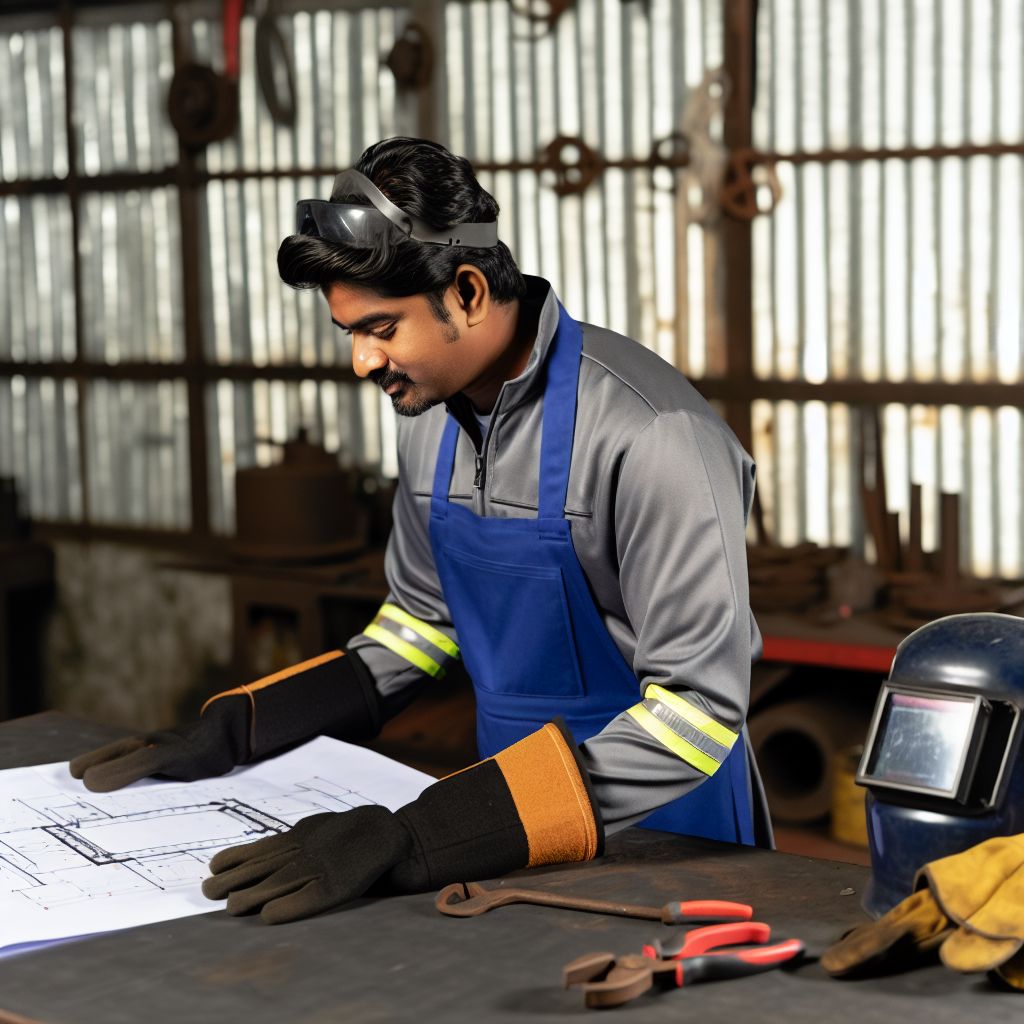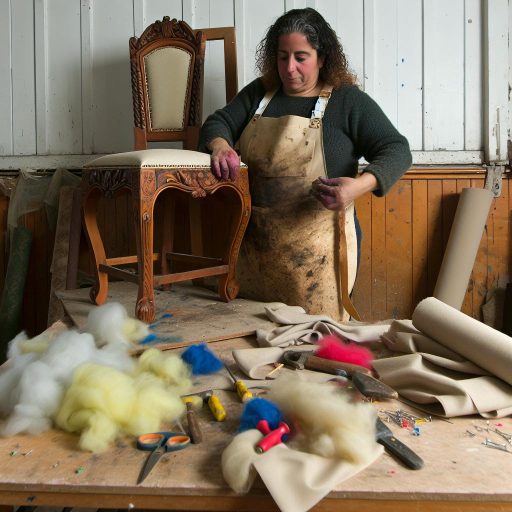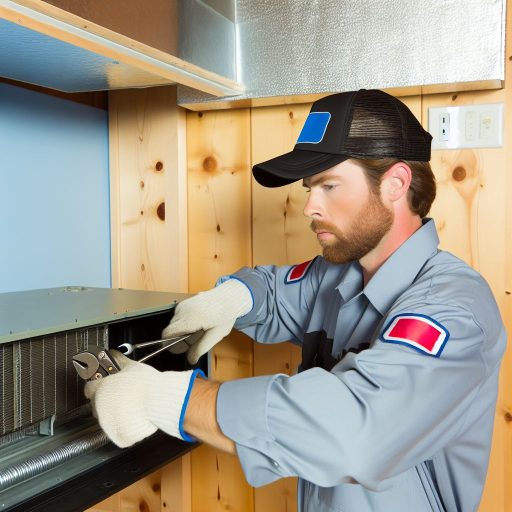Introduction to Blueprint Reading in Metal Fabrication
Blueprint reading is a critical skill in metal fabrication.
It provides essential information for building metal structures.
Moreover, understanding blueprints ensures accuracy in production.
In metal fabrication, precise measurements are paramount.
Missing details can lead to costly mistakes and delays.
Understanding the Basics of Blueprints
Blueprints represent technical drawings that guide manufacturers.
They include dimensions, materials, and assembly instructions.
Furthermore, they often feature symbols and notations specific to the industry.
Recognizing these elements is vital for effective interpretation.
The Role of Symbols in Blueprint Reading
Symbols convey complex information succinctly.
For instance, lines may indicate boundaries or welds.
Additionally, dashed lines often represent hidden features.
Learning these symbols enhances understanding and communication.
Importance of Accurate Measurements
Blueprints specify exact measurements for every component.
Fabricators must measure twice to ensure correctness.
Inaccuracies can compromise the structural integrity of the final product.
Ultimately, precision leads to higher quality work and customer satisfaction.
Impact on Overall Production Process
Reading blueprints accurately streamlines the fabrication process.
It minimizes errors that could disrupt workflow.
Further, clear understanding improves collaboration among team members.
Timely completion depends on everyone’s ability to follow the plans.
Training and Skill Development
Training in blueprint reading should be a priority for workers.
Workshops and hands-on practice enhance these critical skills.
Industry-specific courses are beneficial in providing relevant knowledge.
Ultimately, investing in training pays off in the long run.
Unlock Your Career Potential
Visualize a clear path to success with our tailored Career Consulting service. Personalized insights in just 1-3 days.
Get StartedThe Role of Blueprints in the Metal Fabrication Process
Defining Blueprints
Blueprints are detailed drawings that guide metal fabrication tasks.
They typically include precise measurements and key specifications.
Moreover, they illustrate the finished product’s design and shape.
Engineers and architects often create these essential diagrams.
Coordination Among Teams
Effective communication relies on well-defined blueprints.
Blueprints allow different teams to collaborate seamlessly.
Welders, metalworkers, and designers all depend on these documents.
Consequently, blueprints help avoid misunderstandings during production.
Quality Control and Consistency
Blueprints play a significant role in ensuring quality control.
They establish standard measurements crucial for accuracy.
Consistent production results from following set guidelines.
Ultimately, blueprints reduce errors and enhance product quality.
Training and Skill Development
Blueprint reading is essential for workforce training.
New employees must learn to interpret detailed drawings effectively.
This skill is vital for successful metal fabrication careers.
Furthermore, understanding blueprints enhances overall craftsmanship.
Facilitating Project Management
Blueprints aid project managers in scheduling tasks.
They provide a roadmap for project progression and delivery.
Effective planning is based on detailed blueprints.
Therefore, managers can allocate resources appropriately.
Adapting to Changes
Blueprints are adaptable to design modifications as needed.
They can evolve with a project’s requirements and challenges.
Flexibility in blueprints supports innovation in fabrication.
This allows teams to meet client specifications more accurately.
Key Components of a Blueprint
Understanding Symbols
Symbols are the language of blueprints.
They convey vital information about the materials and processes involved.
Common symbols include lines, arrows, and shapes.
Each symbol has a unique meaning that professionals must understand.
Without this knowledge, misinterpretations can occur.
Measurements in Detail
Measurements are crucial for precision in metal fabrication.
Blueprints specify dimensions for every part to be created.
Units of measurement, such as inches and millimeters, appear throughout.
Understanding these measurements helps avoid costly errors.
Accurate measuring impacts the overall quality of the final product.
Notations and their Significance
Notations provide additional instructions on the blueprint.
They may include notes on finishes, tolerances, and assembly methods.
Each notation plays a vital role in the fabrication process.
Clear notations help ensure that all team members are on the same page.
Thus, reading these properly facilitates smoother operations.
Learn More: Exploring Sustainable Practices in Bricklaying
How Accurate Blueprint Reading Reduces Errors and Waste
The Role of Blueprints in Metal Fabrication
Blueprints serve as the foundation of metal fabrication projects.
They provide detailed specifications that guide the entire process.
Accurate interpretation of these drawings is crucial.
Minimizing Errors through Precision
Precision in reading blueprints directly impacts project outcomes.
When workers understand the details, they make informed decisions.
This understanding reduces the likelihood of mistakes.
Fewer mistakes lead to less rework and enhanced efficiency.
Waste Reduction Strategies
Proper blueprint reading reduces material waste significantly.
When measurements are correctly followed, materials are used effectively.
This approach saves both time and resources.
Consequently, projects stay within budgetary constraints.
Training and Skill Development
Investing in training enhances blueprint reading skills among employees.
Skilled workers rapidly become more confident and productive.
This investment translates to fewer project delays.
Moreover, it fosters a culture of quality and accuracy.
Leveraging Technology for Better Outcomes
Modern technologies can assist in blueprint reading.
Software tools can highlight critical areas and measurements.
These tools improve the speed and accuracy of interpretation.
Additionally, they help in comparing initial designs with finalized projects.
Continuous Improvement Processes
Continuous feedback on blueprint utilization fosters improvement.
Regular reviews can identify recurring issues in understanding.
By addressing these issues, companies reduce errors effectively.
This approach not only enhances productivity but also morale.
See Related Content: Tips for Maintaining Quality in Bricklaying Projects
The Importance of Blueprint Interpretation in Project Planning and Execution
Understanding Blueprints
Blueprints serve as the foundation of any metal fabrication project.
They provide detailed specifications needed for accurate production.
Understanding blueprints helps fabricators visualize the final product.
This visualization aids in effective planning and scheduling.
Effective Communication
Interpreting blueprints ensures all team members are aligned.
Clear communication reduces the chance of errors during production.
It fosters teamwork and collaboration among fabricators, engineers, and designers.
Furthermore, effective communication minimizes misinterpretations of design intent.
Improving Efficiency
Blueprint reading directly contributes to operational efficiency.
Skilled workers can quickly identify materials needed from blueprints.
They can also determine necessary tools for fabrication tasks.
This knowledge enables timely project execution and reduces waste.
Quality Assurance
Blueprints help maintain quality control throughout the production process.
They provide standards that must be met in every fabrication stage.
Consistent reference to blueprints minimizes deviations in design specifications.
Regular verification against blueprints ensures the final product meets quality standards.
Adapting to Changes
Blueprint reading allows teams to adapt swiftly to design changes.
Understanding the underlying details helps in making informed adjustments.
This adaptability is crucial in meeting evolving client needs or project requirements.
Moreover, skilled interpretation aids in efficient troubleshooting of issues.
Gain More Insights: Tips for Roofers to Build a Strong Client Base

Skills Required for Effective Blueprint Reading in the Metal Fabrication Industry
Understanding Technical Drawings
Effective blueprint reading begins with understanding technical drawings.
Fabricators must interpret symbols, lines, and views accurately.
This skill ensures proper measurement and cutting of materials.
Attention to Detail
An acute attention to detail is vital in metal fabrication.
Small errors in reading blueprints can lead to costly mistakes.
Each measurement and specification must be followed precisely.
Mathematical Proficiency
Mathematics plays a crucial role in blueprint reading.
Fabricators need to calculate dimensions and tolerances carefully.
They must apply formulas to ensure accuracy in measurements.
Knowledge of Industry Standards
Understanding industry standards is essential for fabricators.
Blueprints often adhere to specific codes and regulations.
Familiarity with these standards ensures compliance in fabrication processes.
Problem-Solving Skills
Problem-solving skills are necessary when reading blueprints.
Fabricators must identify discrepancies and propose solutions.
This ability enhances workflow efficiency in fabrication projects.
Familiarity with Tools and Equipment
Knowing the tools and equipment is crucial for effective blueprint reading.
Fabricators should understand how tools relate to design specifications.
This knowledge aids in planning the fabrication processes accurately.
Communication Skills
Clear communication is vital among team members.
Fabricators often need to discuss blueprints with engineers and designers.
Effective communication ensures everyone is on the same page.
Graphic Visualization
Graphic visualization skills help fabricators interpret blueprints.
They must visualize completed projects based on their drawings.
This skill enhances their ability to execute fabrication tasks effectively.
Learn More: How to Price Your Work as a Professional Upholsterer
Common Challenges in Blueprint Reading and How to Overcome Them
Understanding Technical Symbols
Technical symbols can often confuse beginners in metal fabrication.
These symbols represent various materials, processes, and measurements.
Familiarity with industry standards can help clarify their meanings.
Utilizing a comprehensive reference guide enhances understanding.
Furthermore, attending workshops can provide hands-on experience.
Interpreting Measurements Accurately
Blueprints often contain a variety of measurement systems.
Converting between imperial and metric can be challenging.
It is crucial to double-check all measurements for accuracy.
Using high-quality measuring tools improves precision significantly.
Additionally, using digital measuring devices can reduce human error.
Identifying Tolerances
Tolerances in blueprints determine acceptable levels of deviation.
Understanding how to read tolerance specifications is essential.
Misinterpretation can lead to costly mistakes during fabrication.
To address this, training programs focused on tolerances are valuable.
Reviewing with experienced colleagues can also enhance comprehension.
Visualizing the Final Product
Imagining the completed project from a two-dimensional blueprint is challenging.
This skill improves with practice and experience.
Using 3D modeling software can aid in visualizing designs effectively.
Creating physical prototypes helps bridge the gap between 2D and 3D.
Additionally, looking at similar completed projects can provide insights.
Communicating with Peers
Effective communication is vital in a fabrication team.
Misunderstandings can arise from unclear instructions in blueprints.
Regular meetings encourage discussion and clarification of design issues.
Utilizing digital collaboration tools can streamline communication.
Moreover, fostering a culture of openness builds trust among team members.
The Impact of Technology on Blueprint Reading and Fabrication Processes
Advancements in Blueprint Technology
Technology has transformed blueprint reading in metal fabrication.
Today, digital blueprints enhance accuracy and accessibility.
Software tools allow faster creation and modification of designs.
Additionally, technologies such as CAD enable detailed visualizations.
Integration of Automation in Fabrication
Automation has revolutionized metal fabrication processes significantly.
Robotic systems perform tasks that once required manual labor.
This integration increases productivity and reduces human error.
Moreover, real-time data helps monitor and improve operations.
Training and Skill Development
The evolving technology necessitates continuous training for workers.
Workers must learn to interpret complex digital blueprints.
Training programs now focus on software tools and automation.
As a result, skilled workers can leverage technology effectively.
Enhancements in Communication and Collaboration
Technology fosters improved communication among project teams.
Cloud-based platforms facilitate easy sharing of blueprints.
These tools allow for real-time updates and feedback.
Consequently, collaboration becomes more efficient and cohesive.
Future Trends in Blueprint Reading and Fabrication
Emerging technologies continue to reshape fabrication landscapes.
For instance, 3D printing offers innovative manufacturing possibilities.
This method reduces waste and allows for complex designs.
Looking ahead, augmented reality may play a crucial role.
Ultimately, the future promises even more integration of technology.
Additional Resources
I have two employees that usually leave work at 6 pm. They are …




